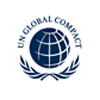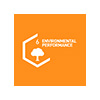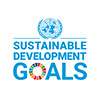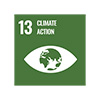Air emissions
Our industrial operations produce various types of air emissions such as sulphur dioxide (SO₂), nitrogen oxide (NOx) and dust, which we manage in accordance with our environmental regulatory approvals and permit discharge limits.
We require our industrial operations to comply with regulatory air quality limits and approvals, which we assess through routine monitoring and trend analysis. By working to manage these emissions, we aim to minimise their impact on local communities and the environment.
Our approach
We monitor all material air emissions from our industrial activities and look for ways to reduce emissions. These include ‘stack’ emissions, and fugitive emissions.
We operate according to relevant regulatory limits for air emissions. Where these are less stringent than our own internal standards, we apply our higher standards.
Types of air emissions we manage
Our metallurgical smelters emit sulphur dioxide (SO2), dust and nitrogen oxide (NOx) as both stack and fugitive emissions, under permit conditions developed through the regulatory approvals process.
Stack emissions
Stack emissions emanate consistently from a fixed source, such as a smelter furnace, and are measurable.
There are many control options for stack emissions, including mitigation during production processes, and capturing and treating off-gases prior to emission through technologies such as electrostatic precipitators, scrubbers or sulphuric acid plants.
Fugitive emissions
Fugitive emissions emanate irregularly from many diffuse sources.
Controlling and managing fugitive dust emissions (also referred to as ‘particulate matter’ or ‘PM’) is a main environmental management focus area for our mining assets. These emissions can occur during the blasting, excavating, moving, and crushing of ore rock, or the removal of topsoil, overburden, or waste rock, especially in environments that are more arid.
Stationary filter equipment technologies are not effective for fugitive emissions, so other controls are utilised, such as dust suppression, construction of berms to minimise dust travelling to communities, optimising our blasting activities, watering our haul roads and using protective coatings on product and waste storage facilities.
Our industrial assets also undertake progressive rehabilitation measures once active operations have been completed as part of our efforts to reduce or eliminate dust-related impacts on our local communities.
Monitoring methane emissions
Methane is a focus area for GHG emissions performance due to its global warming potential. It is also an important element in safety management at underground coal operations. Our coal industrial assets utilise various strategies to measure and mitigate their methane emissions. We recognise the importance of accurate measurement of, and strategies to mitigate, methane emissions. Our coal assets utilise the most accurate regulated measurement methods available in their jurisdictions. Our emissions reduction targets include fugitive methane.
During 2024, we transitioned three of our open-cut mines (Hail Creek, Clermont and Collinsville) to the most accurate regulated method available in Australia for open-cut fugitive emissions measurement, Method 2 under the Australian National Greenhouse and Energy Reporting legislation, as amended (Method 2). Our transition to Method 2 concluded a three-year programme of extensive site-specific technical studies required to comply with Australia’s principles of transparency, comparability, accuracy, and completeness. This completes the transition of all of our Australian coal industrial assets to Method 2.
We continue to monitor and review the development of emerging technologies for methane detection and measurement including satellite, aerial and remote sensing methods. We observe that such emerging technologies would currently find it challenging to comply with the principles of regulated methods. We believe more research is required, to assess what potential role ‘top-down’ monitoring may have in informing emissions inventory. We remain aligned with the Australian government and its Climate Change Authority, who consider further work is required before such methods can be applied to estimate emissions inventory with transparency and credibility. We are engaging with relevant stakeholders and partnering with other companies in research, and monitoring other ’top-down’ measurement by credible stakeholders, including the Australian government.
Managing gas is a major safety requirement for underground coal mining, with the added benefit of emissions reduction. Our Australian coal business drains gas from coal seams impacted by mining; the captured methane is either mitigated via flaring or directed to power generation, in turn reducing the mine’s emissions.
Abating fugitive methane emissions at open cut mines is technically and operationally challenging and there is currently not a proven and effective abatement option. Typically, open-cut mines are shallower than underground mines, have lower gas contents, and mining activities target multiple coal seams of varying thickness, all of which are barriers to effective gas drainage. In addition, there is a need to manage safe interaction between active mining processes and gas drainage activities, while allowing adequate time for gas capture prior to mining.
We continue to investigate and assess opportunities to abate fugitive emissions feasibly and practicably at our open cut mines. We are also working collaboratively with our peers in the Australian Coal Industry Research Program to address these challenges.
Principles we follow
-
 UN Global CompactVisit the website
UN Global CompactVisit the website -
 Principle 7Read more
Principle 7Read morebusinesses should support a precautionary approach to environmental challenges
-

-
 Principle 9Read more
Principle 9Read moreencourage the development and diffusion of environmentally friendly technologies
-
ICMMVisit the website
-

-
 UN SD GoalsVisit the website
UN SD GoalsVisit the website -


